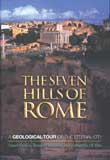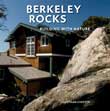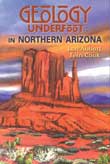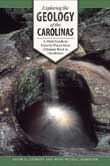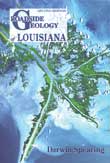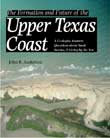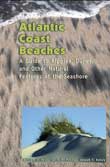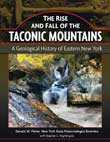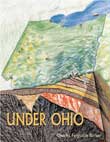|
GEOMEDIA
Check out the latest On the Web links, your connection to earth science friendly Web sites. The popular Geomedia feature is now available by topic.
BOOKS: Crafting Water Policy in the Great Lakes Basin: The Great Lakes Water Wars
BOOKS: Hit the Road on a Geo-Vacation: A Summer Reading Lineup
Book review
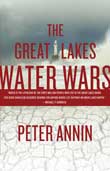 |
The Great Lakes Water Wars |
Jennifer Yauck
In 1998, a small Canadian consulting firm came up with a business idea: Send empty tankers to Lake Superior, fill the tankers with water, and then ship the water — as much as 158 million gallons per year — to buyers in Asia. The proposal was simple, but it raised a complex issue that soon sent a wave of alarm rippling across the Great Lakes Basin. If a tiny company could legitimately export Great Lakes water to Asia, what would prevent large corporations or thirsty desert states from dipping their cups into the lakes, too? What would prevent the lakes from eventually being drained to death?
Large-scale destruction wasn’t impossible; it had already happened elsewhere. In a span of just 40 years, Central Asia’s Aral Sea, which once held nearly as much water as Lake Ontario, lost 90 percent of its volume and 75 percent of its surface area to unsustainable water use. People in the Great Lakes region didn’t want to see their water resources similarly abused. Amid public outcry in Canada and the United States, the firm soon withdrew its proposal. The incident, however, left the region shaken, and spurred officials in both countries to begin crafting improved management policies for the Great Lakes (see Geotimes, May 2006).
In The Great Lakes Water Wars, author Peter Annin describes the Herculean efforts of Great Lakes officials to negotiate a modern water-management compact that addresses the concerns of governors and premiers, environmentalists and industrialists, and municipalities and water experts. What Annin’s book does not, and cannot, do is provide the conclusion to the story. After years of negotiations that led to a finalized compact in late 2005, the agreement is currently moving through seven state legislatures (it has already passed in Minnesota) and Congress. It needs the approval of each before it becomes binding.
And that’s what makes The Great Lakes Water Wars a timely and necessary read for anyone interested in the Great Lakes and the policies that will shape their future. As politicians and the public prepare to judge the compact in the coming months and years, Water Wars provides a valuable service: It places the agreement, and the Great Lakes, in a historical, regional and global context. What’s more, the book accomplishes this through a series of artfully balanced and thoroughly researched stories.
In one such story, Annin recounts how in the late 1800s Chicago infamously reversed its river, diverting water from Lake Michigan to flush the city’s sewage into the Mississippi River — and out of the Great Lakes Basin. More than a century later, the diversion is still a source of bitterness. Annin gives equal time to Ontario’s Ogoki River and Long Lac, a lesser-known, and larger, pair of diversions into the Great Lakes Basin. Through these and other anecdotes, Annin illustrates the complexity of water management, showing how past decisions have negatively impacted native communities, benefited a wartime economy and national security, influenced public health and agriculture, and determined the fates of several cities and towns. He goes on to discuss current controversy over Waukesha, Wis., a growing Milwaukee suburb that is seeking access to water from Lake Michigan despite lying just outside the Great Lakes Basin.
Ultimately, Water Wars is a testament to our intricate connection to water, and serves as a reminder that in this time of population growth and climate change, we should take that connection seriously and start thinking more sustainably.
Peter Annin is a former correspondent for Newsweek and currently serves as associate director of the Institutes for Journalism and Natural Resources. Recently, he spoke with Geotimes Contributing Writer Jennifer Yauck about where the compact is headed. More information about his book, supplementary water policy documents and links to recent Great Lakes news stories are available online at www.greatlakeswaterwars.com.
JY: Why is the issue of Great Lakes management so critical right now?
PA: As I said in the book and as other people have said, the last century was the century of oil; the next century is going to be the century of water, and it’s going to be marked by growing tension over water, of course, in water-parched areas of the world. But what’s surprising to a lot of people is that there’s already tension over water in the water-rich areas of the world. As the global value of fresh, drinkable water increases, there’s going to be increased pressure on these regions.
JY: What was the most memorable thing you experienced while writing this book?
PA: The visit to the Aral Sea. It’s regularly bandied about in the Great Lakes water diversion debate, and what I found was that most of the people who referred to it had never been there. And so I decided to visit the Aral Sea and write the story of what happened, and then let the residents of the Great Lakes region and anywhere else in the world draw their own conclusions as to the relevancy. To stand on the bottom of the old sea bed, where the water used to be 45 feet [14 meters] deep, and think that there used to be this vibrant, teeming ecosystem above your head with fishing trawlers and an economy, and now it’s gone — it was incredibly chilling. I don’t believe that’s what going to happen to the Great Lakes, but the conclusion that I drew is that you can’t stand on the edge of a Great Lake and argue that it’s invincible when you’ve been to the Aral Sea, because it proves that they’re not invincible and that man has the power to destroy them in a really, really short period of time.
JY: What is the status of the compact and what is the next step?
PA: The compact has to be adopted by all eight legislatures in the Great Lakes Basin and by Congress to be an enforceable water management document. And then of course we have to have a similar agreement adopted by Ontario and Quebec, which is separate from the compact. So we’re at this stage now where people need to really become engaged because we’re at one of these unique historical moments where the foundation for the future is being laid. They need to follow the issue, they need to be in contact with their representatives and let them know how they feel and what should be done.
JY: You’ve talked about your book at many conferences, schools and bookstores. What are people saying about the Great Lakes issue?
PA: It’s really interesting to see how varied the interest is in the topic, from technical water manager types all the way down to sailors and cottagers in Canada. What I’ve seen at these meetings is just an enormous groundswell of concern about the Great Lakes and that the right thing be done, and that it be done as soon as possible. People who come to my talks are worried, and there’s an energy there, almost to the level of frustration that things aren’t moving more quickly. People really care about the lakes. They hunger for information about them, and they hunger for a way to protect them for their children and their grandchildren.
Links:
"Rejuvenating Restoration of the Great Lakes," Geotimes, May 2006
www.greatlakeswaterwars.com
Whether you planned a summer trip specifically to see an area’s geology, or just stop if you see something interesting along the way, a good book can help you figure out exactly what you’re seeing. Fortunately, a number of geology-based books and field guides hit bookstores this year, just in time for that trip. The Geotimes staff browsed the selection and chose a few that span the United States and Europe that will appeal to all audiences. So pack your camera and reading glasses, and prepare to learn something new this summer.
EUROPE
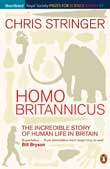 Penguin Press Publicity |
Homo Britannicus, by Chris Stringer. Allen Lane, 2006. ISBN 0 7139 9795 8. Hardcover, £25.00. Take a trip back in time to see how humans came to colonize Britain. Chris Stringer, who studies human origins at the Natural History Museum in London, tells the story of how humans occupied and moved about Britain, including tales based on his research of humans living among hippos and tigers, as well as mammoths and reindeer. The book made the short list for the 2007 Royal Society Prize for Science Books. |
The Seven Hills of Rome, by Grant Heiken, Renato Funiciello and Donatella de Rita. Princeton University Press, 2007. ISBN 0 6911 3038 8. Softcover, $17.95. If you’re headed to Rome, consider any of the three field trips around the city described in this book and learn how the geology of Rome and its rivers, plateaus, coastal access and clean drinking water from nearby springs helped the city grow. The authors divide the book into chapters based on geographical location, and it is easy to carry along on a tour or read from the comfort of home. |
U.S. WEST AND SOUTHWEST
Nature’s Yucky! 2: The Desert Southwest, by Lee Ann Landstrom, Karen I. Shragg and Rachel Rogge (Illustrator). Mountain Press Publishing Company, 2007. ISBN 0 8784 2529 2. Softcover, $12.00. Kids heading to the American southwest for summer vacation can get a head start on learning about some of nature’s creatures that they might encounter. The book profiles 16 yucky creatures, such as the regal horned lizard that squirts blood from its eyes and the smelly javelina. For further fun, bake a raven-gut upside-down cake (recipe included) or sing along with the lyrics to the “Nature’s Yucky” song. |
Berkeley Rocks: Building with Nature, by Dave Weinstein and Jonathan Chester (photographer). Ten Speed Press, 2007. ISBN 1 5800 8486 9. Hardcover, $35.00. This book’s 200 color photos will make you feel like you’re walking the streets of Berkeley, Calif., touring the city’s unique meld of geology and architecture. Rock outcrops called Northbrae rhyolite were incorporated into the city’s planning during the early 20th century. Photos and analysis by landscape designers and architects help tell the story of the philosophy behind the city’s layout. |
Geology Underfoot in Northern Arizona, by Lon Abbott and Terri Cook. Mountain Press Publishing Company, 2007. ISBN 0 8784 2528 4. Softcover, $18.00. The latest in the Geology Underfoot series heads west for a look at the rocks and landforms of northern Arizona — the region that includes the Grand Canyon, Red Rocks of Sedona and Monument Valley. Geology Underfoot in Northern Arizona explores these and 17 other geologic wonders through detailed descriptions, maps, photos and diagrams of their origin. Authors Lon Abbott and Terri Cook, both geology faculty at Prescott College in Arizona, cover all the basics — including driving directions — and even go into deep detail for the inquisitive reader. |
U.S. SOUTH AND SOUTHEAST
Exploring the Geology of the Carolinas: A Field Guide to Favorite Places From Chimney Rock to Charleston, by Kevin G. Stewart and Mary-Russell Roberson. The University of North Carolina Press, 2007. ISBN 0 8078 5786 6. Softcover, $19.95. Whether you call the Carolinas home or you’re just passing through, this field guide will aid in your exploration of the region. Read about the history of the states’ gold rush in the early 1800s, as well as about the largest earthquake to strike the East Coast, which shook Charleston in 1886. Descriptions of more than 30 excursions will help you get on your way to a geological adventure. |
Roadside Geology of Louisiana (Updated Edition), by Darwin Spearing. Mountain Press Publishing, 2007. ISBN 0 8784 2530 6. Softcover, $20.00. Roadside Geology of Louisiana returns with an updated version that includes new sections related to Hurricane Katrina. Read about how the Mississippi River Delta was reshaped by the storm’s force. Like the previous version, however, the new edition also offers road trip suggestions with descriptions of ridges, lakes, salt domes and more, all visible from your car. |
Upper Texas Coast: A Geologist Answers Questions about Sand, Storms and Living by the Sea, by John B. Anderson. Texas A&M University Press, 2007. ISBN 1 5854 4561 4. Softcover, $24.95. Texas has more than 590 kilometers of coastline, defining the state’s boundary along the Gulf of Mexico. If you’re planning a trip south to check out the coast’s trails and sanctuaries, consider this book as a crash course in the region’s evolving landscape, from the effects of erosion and hurricanes to sea level change. |
U.S. EAST AND MIDWEST
Atlantic Coast Beaches: A Guide to Ripples, Dunes, and Other Natural Features of the Seashore, by William J. Neal, Orrin H. Pilkey and Joseph T. Kelley. Mountain Press Publishing, 2007. ISBN 0 8784 2534 9. Softcover, $20.00. Lounging on the beach just became more educational: Pack this book along on your summertime trip to the shore and learn the answers to quirky questions about the Atlantic seashore, such as why sand barks, or sings, when stepped upon. The authors have backgrounds in sedimentology and geology and describe for general audiences a full range of features of beaches that span the East Coast. |
The Rise and Fall of the Taconic Mountains: A Geologic History of Eastern New York, by Donald Fisher and Stephen Nightingale. Black Dome Press Corp., 2006. ISBN 1 8837 8952 4. Softcover, $24.95. Follow New York’s Taconic Mountains through hundreds of millions of years of change, as they rose to more than 4,000 meters and then fell to their current stature of less than more than 1,000 meters tall. The authors, both New York state geologists emeriti, combine their years of fieldwork into descriptions about how this region took shape. The book also includes essays about the state’s geologists, a chapter on fossil collecting, and a color, fold-out map of Columbia County. |
Under Ohio: The Story of Ohio’s Rocks and Fossils, by Charles Ferguson Barker. Ohio University Press, 2007. ISBN 0 8214 1755 X. Hardcover, $17.95. Under Ohio hits bookstore shelves just in time for travelers with summer plans to visit the Midwest. The book, written for kids between the ages of 9 and 12, offers information about where to find geologic adventure in Ohio, including the best places to find rocks and fossils. Illustrations and text show a billion years of Ohio’s history, through colliding continents and mountain building, the advance and retreat of tropical seas, and an ice age. |

 Subscribe
Subscribe

